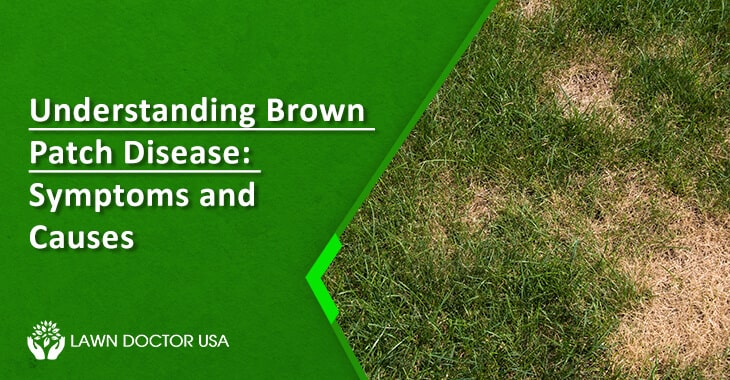
Understanding Brown Patch Disease: Symptoms and Causes
A beautiful, well-maintained lawn is a dream for many homeowners. It’s a place to relax, play with kids and pets, and entertain guests. Everyone wants to keep their lawns green and healthy. But lawns can still fall victim to brown patch disease, which can turn that dream into a nightmare.
Brown patch disease is a common lawn disease caused by a fungus. It can quickly spread and causes brown patches and thin grass. If you fail to recognize the symptoms of this fungus, this leads to severe infection.
This blog will explain brown patch disease’s causes and symptoms. It will also provide practical advice on how to prevent and treat it. This will keep your lawn looking lush and green all year.
What is Brown Patch Disease?
Brown patch disease is a common fungal disease that affects turf grasses, particularly during warm, humid weather conditions. The fungus responsible for this disease is Rhizoctonia solani, which attacks the leaves and stems of grass plants, causing them to turn brown and die.
Symptoms of Brown Patch Disease
One of the most noticeable symptoms of brown patch disease is the circular, brown patches on the lawn. These patches can vary in size from a few inches to several feet and are typically more prominent in the early morning or late evening when there is dew on the grass. The patches may merge in severe cases, causing large lawn areas to turn brown and die.
Another symptom of brown patch disease is a grey or white, cottony fungal growth that appears on the grass blades, particularly near the edge of the brown patches. This fungal growth results from the fungus-producing spores, which are spread by wind, water, and mowing equipment.
Disease Process
Brown patch disease is caused by a fungus that can survive the winter in the soil or infected grass. This fungus creates small structures called sclerotia that can live long without a grass host. When conditions are favorable for the fungus, the sclerotia start to grow and spread the fungus to grass leaves and stems, causing brown patches to form on the lawn. The fungus can continue to infect nearby grass until conditions become less favorable for its growth.
Causes of Brown Patch Disease
Brown patch disease is caused by the fungus Rhizoctonia solani, which thrives in warm, humid weather conditions, particularly when the temperature is between 65 and 90 degrees Fahrenheit. The fungus also needs moisture to grow, and it can quickly spread from one area of the lawn to another if there is dew, rain, or watering.
One of the leading causes of brown lawn fungus is over-watering. Watering the lawn too frequently, especially in the late afternoon or evening, can create ideal conditions for the fungus to grow and spread. Over-fertilizing the lawn can also lead to the development of brown lawn fungus, as the excess nitrogen in the fertilizer can promote rapid grass growth, making the grass more susceptible to fungal infections.
Prevention and Treatment of Brown Patch Disease
Preventing brown lawn fungus requires good lawn care practices, including proper watering, mowing, and fertilization. Here are some tips to help prevent and treat brown patch fungus in lawns:
- Water the lawn deeply and infrequently, preferably in the early morning. This will allow the grass to absorb the moisture it needs without creating an environment conducive to growing the brown patch fungus in lawns.
- Avoid watering the lawn in the late afternoon or evening, as this can create an environment that is too humid for the grass to dry out properly. It can lead to the development of brown patch fungus in lawns.
- Mow the lawn regularly, but not too short. Keeping the grass at 2-3 inches in height will promote good air circulation, which can help prevent the growth of the brown patch fungus in lawns.
- Fertilize the lawn according to the manufacturer’s instructions, and avoid over-fertilizing, as this can promote the growth of the fungus.
- Treat brown lawn fungus with a fungicide. If you notice the symptoms of brown patch fungus in lawns, it’s important to act quickly to prevent the fungus from spreading. A fungicide can help control the fungus’s growth and prevent it from causing further damage to your lawn.
Conclusion
Brown patch disease is a common fungal disease that can cause unsightly brown patches on your lawn. By following good lawn care practices, including proper watering, mowing, and fertilization, you can prevent fungus growth and keep your lawn healthy and green.
If you’re noticing brown or yellow patches on your lawn, it’s essential to have it assessed by a professional landscaper as soon as possible. Attempting to diagnose and treat the issue without expert guidance can be counterproductive and make the problem worse. Lawn Doctor USA experienced teams can provide accurate assessments and effective treatments for brown patches, taking the burden off your shoulders and ensuring your lawn is healthy and beautiful.




